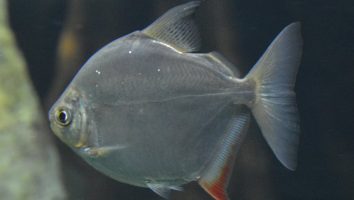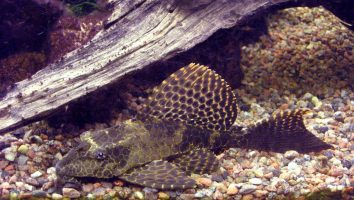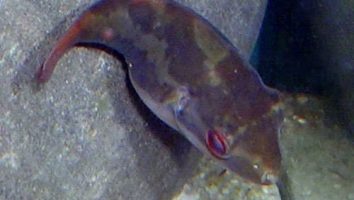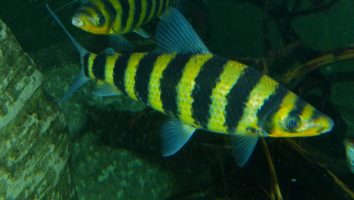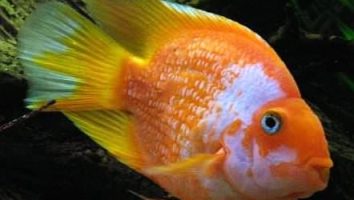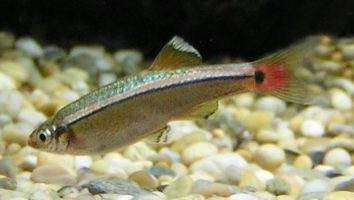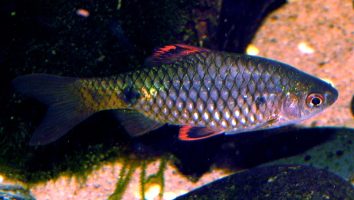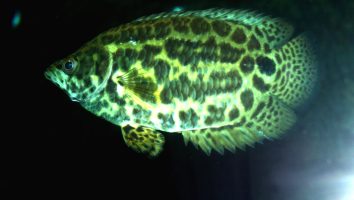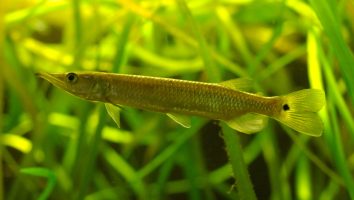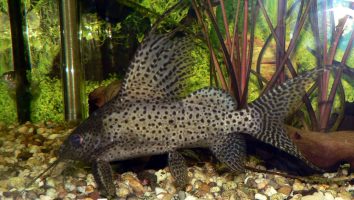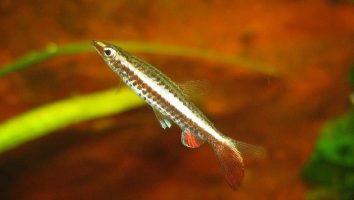The Johanni cichlid is a beautiful freshwater fish that is perfect for beginners. They are easy to care for and make a great addition to any aquarium.
This guide will teach you everything you need to know about Johanni cichlid care. You’ll learn about their diet, size, lifespan, and more!
Table of contents
Species overview
The Johanni cichlid (scientific name: Metriaclima johannii) is a freshwater fish that’s native to Lake Malawi in Africa.
They are part of the Mbuna species, which is a large group of cichlids that are all native to the same lake.
Johanni cichlids are one of the smaller Mbuna species, only growing to be about 4 inches in length.
They are one of the more peaceful Mbuna cichlids, which makes them a popular choice for many aquariums.
Johanni cichlids are known for their beautiful colors. They are mostly blue with some yellow and black markings.
Appearance
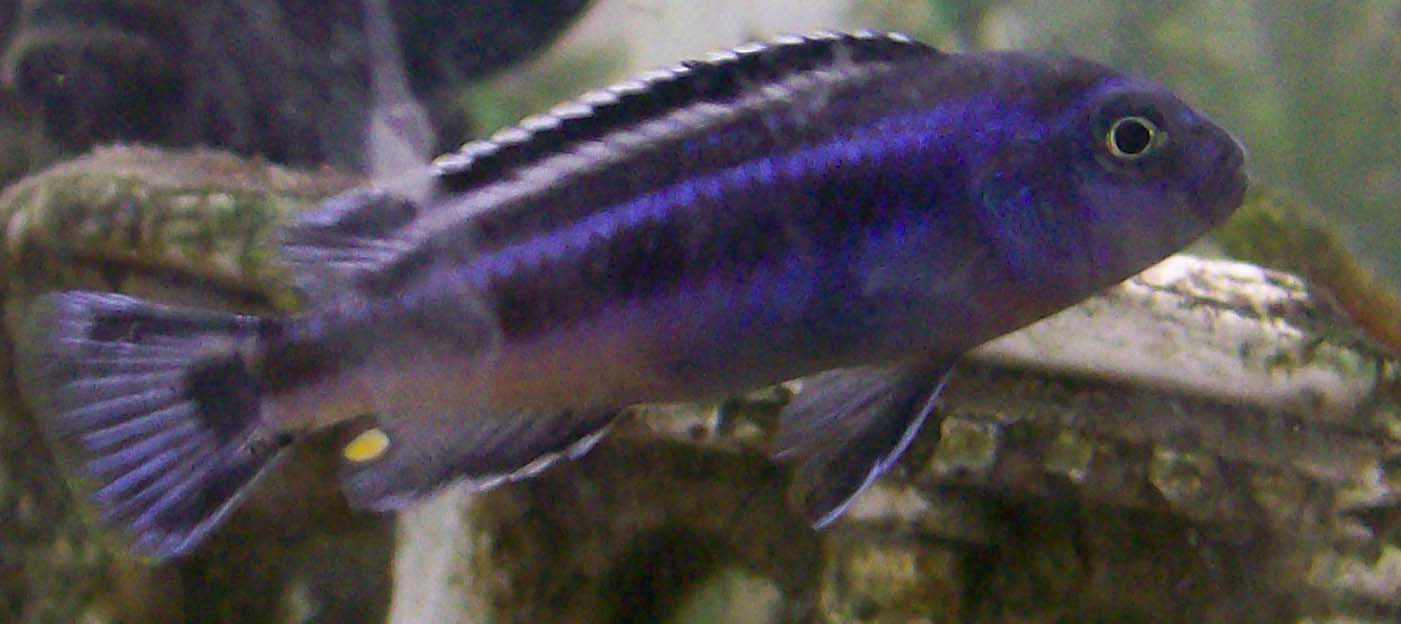
The Johanni cichlid is one of those fish that’s easy to fall in love with at first sight. They’re absolutely gorgeous fish that come in a wide variety of colors and patterns.
The body shape of the Johanni cichlid is long and slender with a pointed nose. They have a slightly humped back that gives them a bit of an arched look.
The dorsal fin of the Johanni cichlid is tall and starts about two-thirds of the way back on the body. It extends back quite a ways and has a pointed end.
The anal fin is a mirror image of the dorsal fin and also has a tall, pointed end.
The pectoral fins are long and thin. The caudal fin is forked and also tall.
The Johanni cichlid has a very prominent lateral line that’s easy to see. This line is slightly curved and starts at the gill plate and extends all the way to the base of the tail.
Johanni cichlids are very colorful fish. The base color can be anything from yellow to blue to green. They often have vertical stripes that are usually black or dark blue in color. These stripes can be thin or thick and sometimes have spots in between them.
Males tend to be more colorful than females. They also have a nuchal hump that females lack.
Lifespan
Johanni cichlids have an average lifespan of 5 to 10 years. As with most fish, their lifespan can be impacted by a number of factors.
One of the biggest is the level of care they receive. If they’re kept in subpar conditions, their lifespan will be on the lower end of the spectrum.
Another big factor is whether or not they’ve been bred in captivity. Wild-caught Johanni cichlids tend to have shorter lifespans than those that have been bred in captivity.
Size
The Johanni cichlid is a small fish, only growing to be about 4 inches in length. However, they are a very active fish and need plenty of space to swim around. As a result, they should be kept in an aquarium that is at least 50 gallons.
Tank
Tank Size
The minimum tank size for a single Johanni cichlid is 50 gallons. If you want to keep more than one fish, you should add at least another 50 gallons for each fish.
Johanni cichlids are known to be semi-aggressive, so it’s important to give them enough space to establish their own territories. If you don’t provide enough space, they may become stressed and start fighting with each other.
Water Parameters
Johanni cichlids are found in Lake Malawi, which is known for having high water hardness and alkalinity. This is something you’ll need to replicate in the home aquarium.
The water should also be on the warm side, with a temperature range of 75 to 82 degrees Fahrenheit being ideal.
Here are a few other water parameters to keep in mind:
- pH levels: 7.8 to 8.6
- Water hardness: 10 to 30 dGH
- Alkalinity Levels: 10 to 30 dKH
What To Put In Their Tank
When it comes to setting up the inside of your Johanni cichlid’s tank there are a few things you need to take into account.
The first is the size of your fish. Johanni cichlids can grow to be around 10 inches long, so you need to make sure they have enough room to swim. A 55-gallon tank is the minimum size we recommend.
The second thing you need to consider is the substrate. These fish like to dig, so you’ll want something that’s soft and not too sharp. Gravel is always a safe choice, but sand is even better.
As for decorations, these fish don’t really have any specific needs. You can add some plants if you want, but be aware that they might uproot them as they dig. Driftwood, rocks, and caves are all suitable as well.
Just make sure there’s enough open swimming space and you should be good to go!
Common Diseases
The Johanni cichlid is a hardy fish that doesn’t often get sick. However, like all fish, they are susceptible to disease if they’re not kept in ideal water conditions.
The most common disease that these fish get is ich. This is a parasites that manifests itself as white spots on the body of your fish. If left untreated, it can be fatal.
The best way to prevent ich is to maintain clean and stable water conditions in your tank. This will make your fish less stressed and more resistant to disease.
If you do notice ich on your fish, the best course of action is to consult a vet and begin treatment immediately.
Other potential diseases include infections, fungus, and parasites. These are all relatively rare but can still happen if your fish are not healthy and their immune system is weak.
As always, the best way to keep your fish healthy is to provide them with a clean and stable habitat. This will reduce the chances of them getting sick and make them more resistant to disease.
Behavior & Temperament
The Johanni cichlid is a peaceful fish that does well in a community tank. They are a schooling fish, so it’s best to keep them in groups of at least six. They are known to be good tank mates with other calm fish.
Even though they are peaceful, they are still cichlids. So, they can be aggressive when it comes to spawning. The males will become very territorial during this time and may even attack other fish.
When they are not spawning, they are relatively calm and easy-going. They are mostly bottom-dwellers but will occasionally swim to the middle or top of the tank. They are not known to be jumpers, so you shouldn’t have to worry about them getting out of the tank.
Johanni cichlid in a fish tank
Johanni cichlids are omnivores, so they will eat just about anything. They are known to be good algae eaters, so they can help keep your tank clean. In the wild, they eat a variety of foods including insects, crustaceans, and plant matter.
Tank Mates
Johanni cichlids are best kept with other peaceful fish that occupy different parts of the water column.
They’re not aggressive, but they can be territorial.
The best tank mates for a Johanni cichlid are those that can handle similar water conditions. This is especially important since these fish come from Africa where water quality can be an issue.
Some good Johanni cichlid tank mates include:
- Angelfish
- Tetras
- Gouramis
- Rainbowfish
- Danios
- Barbs
Breeding
The Johanni cichlid is a beautiful fish that’s fun to watch and relatively easy to breed. They’re mouthbrooders, which means that the female will carry the eggs in her mouth until they hatch.
The first step is to set up a breeding tank. It should be at least 30 gallons and filled with soft, sandy substrate. Add some rocks and caves for the fish to hide in. The water should be between 78 and 82 degrees Fahrenheit.
Then, you’ll need to add a group of fish. A ratio of 2 females to 1 male is a good place to start. If you have more males, they may fight over territory.
When the fish are acclimated, begin feeding them high-quality foods. This will help to bring out their colors and get them in breeding condition.
As the female starts to swell with eggs, she’ll look for a cave or other hiding spot. The male will follow her and fertilize the eggs. Then, the female will pick them up in her mouth and carry them around until they hatch.
This process takes about two weeks. Once the fry are free-swimming, you can start feeding them baby brine shrimp. Keep up with regular water changes and you should have no problem raising a healthy batch of Johanni cichlids.
Conclusion
The Johanni cichlid is a great fish for beginners and experienced aquarists alike. They’re relatively easy to care for and make a great addition to any community tank.
They’re also a lot of fun to watch, as they’re very active and have a lot of personality.
Overall, we think the Johanni cichlid is a great choice for anyone looking for a new fish, and we highly recommend them!

